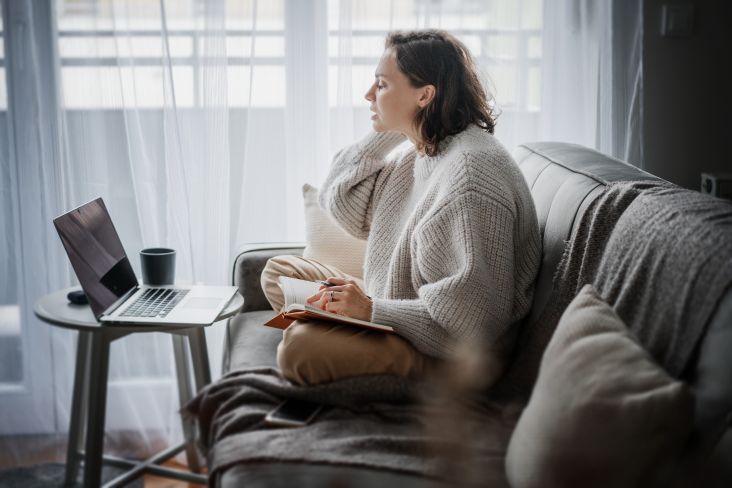Freelancers and the Taxman: 10 essential tax tips for self-employed creatives
Is tax the most confusing, stressful aspect of being a creative freelancer?

Image licensed via Adobe Stock
At times it seems the system is deliberately complex: instructions are written in arcane legalese, it takes hours to get through to HMRC on the phone (if you can get through at all) and trustworthy advice costs good money you could do without spending. Until now.
Dave Legion is a creative freelancer who loathed doing tax returns so much he designed an app to make it easy for self-employed people to know what they owe – and how much cash flow they have. During the creation of the app, he became quite the expert on tax. Here are his top 10 tips.
1. You can claim for much more than you might think
Freelancers get so worried about claiming for things they shouldn’t – they end up not claiming for something they should.
DL: “There’s no fixed list of expenses because almost anything can be treated as one. If it’s something you purchased that is used in the running of your business, then it’s an expense.
“It might seem that you shouldn’t be able to claim against an expense that you get some personal enjoyment out of, but HMRC isn't always the fun police.
“As an example, a freelance graphic designer can claim against a subscription to an online tutorial service because it’s used by the business (themselves) for training purposes.”
2. Claiming for your home office
HMRC states that you should find a ‘reasonable’ way of calculating your expenses for using your home as an office.
DL: “The best way is to take your bills and divide them by number of rooms and the percentage of time you spend working.
“For example, your electricity bill is £400 for the year, and you live in a house with five rooms in total. You use one room for your office. So, divide the total bill by five, which gives you the magic number: £80 for electric for the year. Then do the same for gas and so on.
"Alternatively, HMRC allows you to use simplified expenses instead. It allows a flat rate expense, depending on how much time you spend working per month."
20-50 hours - £10 per month
51-100 hours - £18 per month
101 or more - £26 per month
"Work out which way of calculating is best for you. But don’t try to say you use rooms when you don’t – you might get inspected. Saying you use your spare bedroom as an office - and also the pantry, billiards room, lobby and library - might start to raise a few eyebrows at HMRC.”
3. Keep track of tax on a job-by-job basis - don’t leave it until the end
The current tax system only allows paying your tax bill on an annual basis, i.e. in a lump sum.
DL: “The tricky part is in the ‘staying on top’ of your records as you go. Under-estimating your tax bill could be the difference between treating yourself to a spa weekend break or a week of instant noodle dinners from SPAR. Do your future-self a favour and make a note of the tax you’ll owe either weekly or monthly.”
4. WTF is capital allowance? Appreciate your depreciation
Capital allowance applies to something you buy to enable your business to function, like a computer, a car, etc. A bit of wisdom here can save you money on your tax bill.
DL: “You can claim it all at once, or spread the depreciation amount over several years. “For example, if you purchase a computer for £3,000, you can either claim the full £3,000 against your first-year tax bill (this applies even if you already owned the computer) or claim a percentage of the value instead and save some for the next year.”
5. Most freelancers don’t start their business on April 5th. What about FTE?
Full-time employment, unemployment and self-employment can all happen in the space of a year. This is one more thing to worry about getting wrong.
DL: “If you’ve had some full-time employment in the tax year, you need to get your P45 from your employer(s) which shows your pay and tax for the period you worked for them. Always keep your payslips because HMRC can use that information if need be.”
6. Go paperless
You don’t have to save all your receipts hardcopy any more — great news for all disorganised, messy creatives out there.
DL: “The days of scurrying up to your accountant and slinging them a carrier bag stuffed full of random receipts are over. Or at least they should be.
"HMRC accepts pictures of receipts, but as with most things, make sure they are backed up safely on your preferred cloud storage.
“It’s also a good idea to keep the files well indexed. This is another thing your future self will thank you for when you aren’t trying to find a missing petrol receipt with a filename like DSC_00001188000190.JPG in the very early hours of the morning.”
7. Make some money off that dormant tax cash-pot
You can only pay HMRC once a year, so if you know where you are on a real-time basis, you can set aside your tax to pay in a tax-free, interest-paying ISA.
DL: “The more tax you owe, the more interest you make. Say what!
“If setting up an ISA seems like too much hassle (which it isn’t, so try not to be lazy), try opening a savings account with your existing bank account – re-label it ‘TAX’ and regularly, transfer the tax amount straight into that account. You’ve got yourself some free money there.”
8. Payments on account: Hey, my tax bill just doubled!
HMRC uses payments on account to avoid people having one big bill at the end of the year.
DL: “It's one mid-tax-year payment and then an end of year one, plus any balancing amount that may be required. It's based on your most recent tax bill so if you have a spike in profits; then you can end up paying too much the following year.
“Don’t panic and run to Cash Generator with armfuls of your old DVDs because this is easy to remedy. One quick call to HMRC or using an online form will get your tax bill reduced to a more accurate figure.”
9. Don’t wait until the last minute to do your tax return
Of the 4.6 million people doing self-assessment, one million waited until the very last day. A further 890,000 missed it entirely and got stung with a £100 fine.
DL: “Many of these penalties will be waived if you provide a 'reasonable' excuse for it being late. If your dog chewed through the internet cable, HMRC would let you off on appeal. Don’t leave it all to the last minute though: registration for tax purposes is not as simple as the real-time signups we’ve gotten used to on countless other websites. It takes two weeks to receive your Unique Tax Reference number (UTR), and 28 Days for your Government Gateway login.”
10. Don’t overload your brilliant creative brain with tax tips - get an app
Take it away, Dave Legion:
“TAXO’D is the first multi-platform finance management tool created for freelancers by freelancers. TAXO’D removes tax bill anxiety by telling you how much tax you owe in real-time and even files your tax return for you. So now you can focus on whatever it is you do best – being creative.”
Taxo’d is a free app that is in BETA-testing phase. If you’d like to get involved in the testing, take some of your stresses away and give you the headspace to be even more creative – you can sign up the for the BETA test online.
Dave Legion is a freelance illustrator, animator, designer and Creative Boom subscriber of six-years standing…since the very beginning.




 by Tüpokompanii](https://www.creativeboom.com/upload/articles/58/58684538770fb5b428dc1882f7a732f153500153_732.jpg)

 using <a href="https://www.ohnotype.co/fonts/obviously" target="_blank">Obviously</a> by Oh No Type Co., Art Director, Brand & Creative—Spotify](https://www.creativeboom.com/upload/articles/6e/6ed31eddc26fa563f213fc76d6993dab9231ffe4_732.jpg)
















